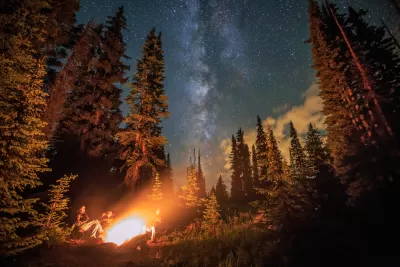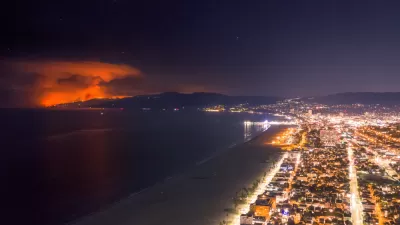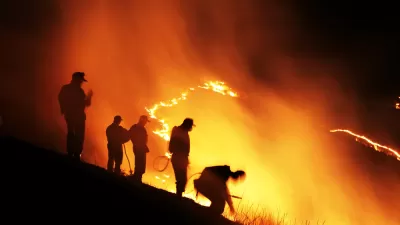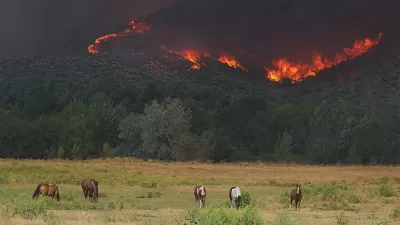Regulators are increasingly requiring outdoor adventurers to enjoy wilderness excursions without the solace and warmth of a campfire, as the drought and heat of climate change leaves natural areas ready to spark and burn year-round.

Conrad Swanson reports from Colorado, where campfires, that enduring symbol of the American West and the great outdoors, are increasingly illegal.
“The days of explorers ambling into Colorado’s backcountry, gathering kindling and sparking a fire for some supper and perhaps a s’more or two are gone,” writes Swanson for the Denver Post.
“Despite the spring months historically serving as a wet time of year, especially as snowpack begins to melt off, as of Tuesday, 24 of Colorado’s 64 counties and one Native American tribe reported at least some fire restrictions in place,” reports Swanson.
Regulators use a metric called energy release component (ERC)—basically the moisture levels in plants—to determine how hot a fire would burn and set campfire regulations accordingly. The ERC is up by as much as 50 percent around the American West, according to research and an expert cited in the source article.
Both state and federal land managers are responsible for the bans, which have become commonplace as wildfire risks grows and the state looks to protect not only its natural and built environments, but its $37 billion outdoor recreation economy.
FULL STORY: No more s’mores: Is this the end of campfires in Colorado?

Planetizen Federal Action Tracker
A weekly monitor of how Trump’s orders and actions are impacting planners and planning in America.

San Francisco's School District Spent $105M To Build Affordable Housing for Teachers — And That's Just the Beginning
SFUSD joins a growing list of school districts using their land holdings to address housing affordability challenges faced by their own employees.

The Tiny, Adorable $7,000 Car Turning Japan Onto EVs
The single seat Mibot charges from a regular plug as quickly as an iPad, and is about half the price of an average EV.

With Protected Lanes, 460% More People Commute by Bike
For those needing more ammo, more data proving what we already knew is here.

In More Metros Than You’d Think, Suburbs are Now More Expensive Than the City
If you're moving to the burbs to save on square footage, data shows you should think again.

The States Losing Rural Delivery Rooms at an Alarming Pace
In some states, as few as 9% of rural hospitals still deliver babies. As a result, rising pre-term births, no adequate pre-term care and "harrowing" close calls are a growing reality.
Urban Design for Planners 1: Software Tools
This six-course series explores essential urban design concepts using open source software and equips planners with the tools they need to participate fully in the urban design process.
Planning for Universal Design
Learn the tools for implementing Universal Design in planning regulations.
Smith Gee Studio
City of Charlotte
City of Camden Redevelopment Agency
City of Astoria
Transportation Research & Education Center (TREC) at Portland State University
US High Speed Rail Association
City of Camden Redevelopment Agency
Municipality of Princeton (NJ)





























